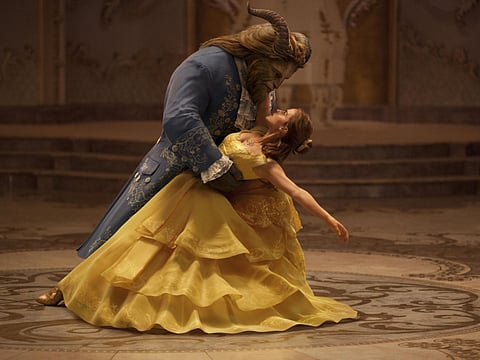‘Beauty and the Beast’ film review
Emma Watson and Dan Stevens head a decidedly diverse cast in the Disney’s best live-action remake to date

Disney’s attempt to cash in on their vault of beloved, classic animated films by turning them into live-action remakes continues with its latest offering, Beauty and the Beast.
The fourth film in that attempt, following Alice in Wonderland, Cinderella and The Jungle Book, Beauty and the Beast comes through as a clear winner. This despite not overcoming pivotal problems carried forward from the original 1991 film.
Because, if you all remember your fairy tales, the story is just another glorified Stockholm Syndrome attack wrapped in the shiny foil of gold-gilded ball rooms and beautifully performed ballads. But when a movie that claims to be a reformed take on an outdated fable does so by casting the millenials’ go-to feminist, Emma Watson, as its lead heroine Belle, you know you’ve been played.
Watson, as the girl-with-her-nose-always-stuck-in-a-book, is perfect. When she sings her eponymous track Belle, pitch-perfectly if we might add, you’re instantly lifted by its optimism and yearning. When she tries to teach a young girl to read, you know she’s filled with real conviction and drive.
But even Hermione Granger can only do so much. The moments where Watson finds herself faltering are the ones where she probably found it difficult to set aside her own disbelief in the essential crux of the story: the beauty falling for her captor beast.
The plot is not dissimilar. Maurice, Belle’s father (Kevin Kline), travels to town to sell his wares and in a quest to get his daughter a rose, plucks a flower from the Beast’s garden, immediately getting himself imprisoned in an enchanted castle.
Belle follows him back to the castle, pleads with the Beast to take his place, and resigns herself to a lifetime of imprisonment. And to break the spell on themselves and their master, the cursed cutlery and furniture of the castle try to get Belle and the Beast together.
And the gay moment everyone seems to have an opinion about? It appears in a blink-and-you-miss-it moment near the conclusion of the film when the comically endearing LeFou (Josh Gad), who is clearly in love with the hypermasculine dude-bro Gaston (Luke Evans flexing his acting chops admirably), fleetingly dances with a male partner.
That said, there are some useful additions made to the story. By setting the film in mid-18th century France, director Bill Condon gives the film some much-needed depth. Some of Belle’s new backstory (which we will not spoil here) effectively helps explain her natural tendency towards bookishness and her need to look beyond her “provincial life”.
The cast is also more diverse: not the main cast, of course, but a good many of the ancillary folk get a racial update. So, it’s refreshing to not have to look at an all-white set of people for the duration of two hours. There are also two inter-racial couples in the film, a rare sight in the world of Disney romances, although you don’t get to see them in human form until the climax: There’s Stanley Tucci’s Maestro Cadenza and Audra McDonald’s Madame, along with Ewan McGregor’s delightfully witty Lumiere paired up with Gugu Mbatha-Raw’s coquettish Plumette.
The true breakout star of the film for us has to be the wonderful Dan Stevens, who plays the cursed Beast. Through all the layers of make-up and fur, Stevens manages to emote rather splendidly. His character transformation through the film — from a gruff and petulant manchild who is too scared to look for love, to a softer and kinder adult growing beyond his physical attributes — is enchanting to behold.
So, is the remake a success? A definitive yes. Did we really need one? Probably not.
Sign up for the Daily Briefing
Get the latest news and updates straight to your inbox


